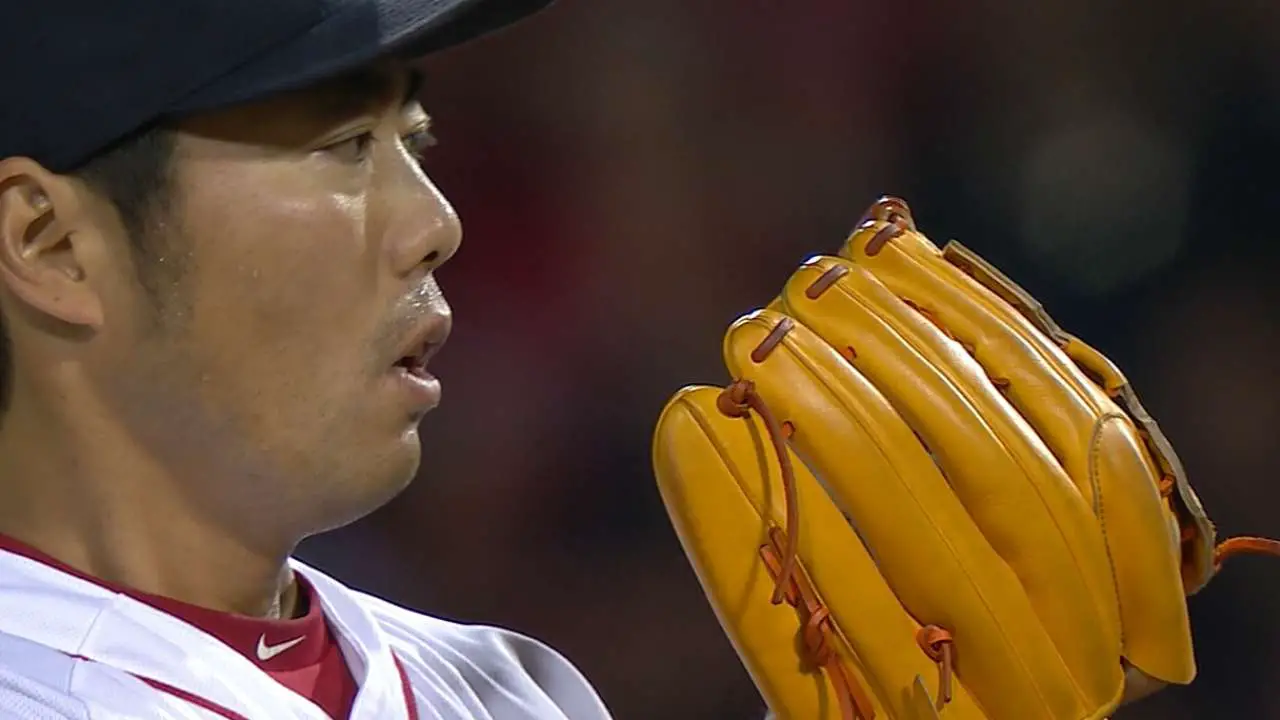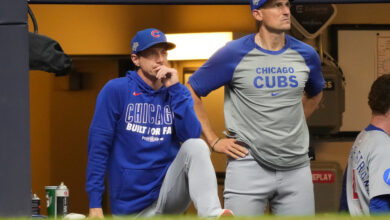
Cubs Reportedly Sign Koji Uehara to Bolster Bullpen
I’ll take Cubs Bullpen for one thousand, Alex.
Mike Montgomery, Wade Davis, and Koji Uehara.
Who are pitchers on the mound for the final out in three of the last four World Series finales.
Correct. You retain control of the board.
The Cubs weren’t lying when they said they were going to keep adding bullpen depth even after trading for closer Wade Davis on Wednesday. I had assumed they’d be targeting lefties, what with the departures of Travis Wood and Aroldis Chapman, not to mention Mike Montgomery‘s possible/probably move to the rotation. But rather than sign Jerry Blevins, a guy who only sounds like he’s really old, the Cubs have reportedly picked up a dude who’s close to cashing Social Security checks and eating dinner at 4pm.
Okay, so Koji Uehara is only going to turn 42 the day after the Cubs open the defense of their World Series title in St. Louis. Still, that’s pretty ancient in baseball terms, especially for a guy not named Julio Franco and who doesn’t throw a knuckleball. When you look at his performance and the experience he brings to the table, though, $4.5 million (Ed. note: final total was $6 million) could end up looking like a steal.
Pitching in Boston last season, Uehara struck out 12.06 batters and walked only 2.11 per nine innings. That’s good for a 5.73 K/BB ratio that was 11th among all MLB relievers with at least 40 innings pitched. He doesn’t perfectly fit the mold of the pitchers the Cubs generally covet, as he kept it on the ground only 21.4% of the time. A 58.3% fly ball rate last season would be alarming as well, but for the fact that Uehara doesn’t give up many hits in the first place.
While his 0.96 WHIP and .199 batting average against were higher than his career marks, they were well below the AL averages of 1.30 and .244 in those categories. In fact, Uehara’s ability to limit baserunners has resulted in a 0.80 career WHIP that is the lowest in history among relief pitchers. Seriously, he’s ahead of Kenley Jansen (0.86), Zach Britton (0.91), and more. New Cubs closer Wade Davis (0.94) is actually fifth on the list. Last? That would be the incomparable Cuddles Marshall, whose nickname probably came from what he needed after posting a 2.13 career WHIP.
Never a fireballer, Uehara works in the mid-80’s with his two- and four-seam fastballs, complementing them with splitter that sits in the upper 70’s. He’s also got a cutter/slider, depending on which tracking service you trust, which serves as an auxiliary pitch. The split-finger has historically been very effective, but there was a bit of a drop-off in 2016 that led to a significant reduction in runs saved by that particular offering.
The interesting thing about the right-handed Uehara, and likely a big part of the reason the Cubs signed him, is that he’s a great reverse-split guy. Seriously, he’s better against left-handed hitters than most lefty pitchers, holding them to a .151/.194/.293 split over the last five seasons. And in 2016, he boasted an even more impressive .139/.200/.278 slash line against. I don’t know about you, but I’ll take a guy who can hold lefties to a .478 OPS no matter how old he is.
That said, it’s a little concerning that Uehara’s line against righties was .250/.306/.505 (.811) and that he allowed 5 home runs to 99 batters. If he’s used as a LOOGY of sorts, those disappointing numbers can be avoided for the most part. Being used in fewer high-leverage situations should help too.
This isn’t the type of move that instantly elevates the Cubs, but it does add some excellent depth and experience to the bullpen. Chicago’s relief corps has plenty of guys who are familiar with pitching in October, and Uehara gives them the lefty specialist they were lacking. And he does it all at a very reasonable cost.
I’d still like to see the Cubs find a way to pick up a young starter who can insure against attrition from injuries, retirement, and free agency, but it’s hard to complain about how the pen has been addressed this winter.

